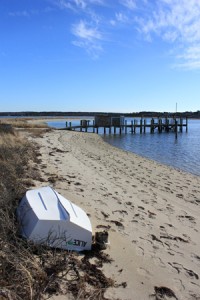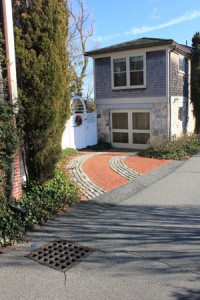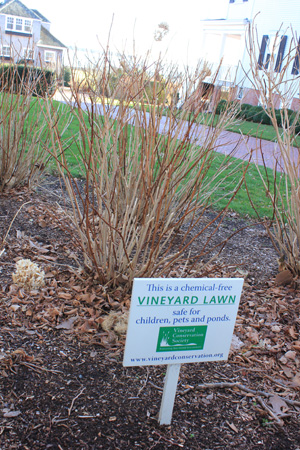 On which coast am I wandering: New Year’s Day, dry, 60+ degrees and bright sun? If you guessed that it’s short-sleeve weather at Martha’s Vineyard, an island off the coast of Massachusetts, MA, you are correct. But, as Mark Twain once said “If you don’t like the weather in New England, just wait a few minutes.” Even as this blog post is being written one week later, the temperature has dropped into the 20’s (Fahrenheit), and freezing rain has covered the ground.
On which coast am I wandering: New Year’s Day, dry, 60+ degrees and bright sun? If you guessed that it’s short-sleeve weather at Martha’s Vineyard, an island off the coast of Massachusetts, MA, you are correct. But, as Mark Twain once said “If you don’t like the weather in New England, just wait a few minutes.” Even as this blog post is being written one week later, the temperature has dropped into the 20’s (Fahrenheit), and freezing rain has covered the ground.
In reading blogs by landscape designers/contractors on the East Coast, one might assume that comparing the world of residential landscaping in Southern California to that of New England might be like comparing apples to oranges — similar only in their basic fruitiness. In large part, that might be attributed to the vernacular architecture or to the way in which cities/towns/suburbs were developed. In New England, the village has prevailed since Colonial times. Fueled by a steady stream of immigrants since the 1600’s, cities, and later, suburbs, expanded outward from a central core. A few centuries after the East was thickly populated, settlers flocked out West, with dreams of developing 3 acre gentleman farm parcels, and the towns reluctantly consolidated from the agriculture. On both coasts, the development was similar, because fishing/aquaculture was the livelihood that bound together the town’s inhabitants.  Walking around Edgartown, a fishing village on the Eastern part of Martha’s Vineyard, one might be struck at how similar it felt to ANY fishing village in Central or Southern California — fishing boats, gulls, cobblestone streets, and upscale gift shops all contribute to this feeling.The similarities are most striking to the G3-trained professional looking at the town through the lens of Attainable Sustainable Residential Landscape Design. What does one observe? Green waste galore (on an island, no less!) with tightly clipped hedges and lawn; impermeable surfaces that drop polluted stormwater directly into street drains with outlets only a few hundred feet away at the beach; pesticide/fertilizer-doused lawns rolling up to the edge of Nantucket Sound. The architecture might be different. The climate may be different (on most days).
Walking around Edgartown, a fishing village on the Eastern part of Martha’s Vineyard, one might be struck at how similar it felt to ANY fishing village in Central or Southern California — fishing boats, gulls, cobblestone streets, and upscale gift shops all contribute to this feeling.The similarities are most striking to the G3-trained professional looking at the town through the lens of Attainable Sustainable Residential Landscape Design. What does one observe? Green waste galore (on an island, no less!) with tightly clipped hedges and lawn; impermeable surfaces that drop polluted stormwater directly into street drains with outlets only a few hundred feet away at the beach; pesticide/fertilizer-doused lawns rolling up to the edge of Nantucket Sound. The architecture might be different. The climate may be different (on most days).  But the landscaping problems faced by the community are THE SAME: pollution of water ways, degradation of soil, squandering of resources, and contribution to greenhouse gases.
But the landscaping problems faced by the community are THE SAME: pollution of water ways, degradation of soil, squandering of resources, and contribution to greenhouse gases.
Fortunately, there were some rays of sunshine, with a few people promoting chemical-free “Vineyard Lawns.”  But these were too few and far between to really be called a “trend.” This demonstrates that it doesn’t matter where you are, implementing the principles of Watershed Wise Landscaping, Ocean Friendly Gardening, and basic Low-Impact Design are critical for ensuring the healthy future of our coastal environments.
But these were too few and far between to really be called a “trend.” This demonstrates that it doesn’t matter where you are, implementing the principles of Watershed Wise Landscaping, Ocean Friendly Gardening, and basic Low-Impact Design are critical for ensuring the healthy future of our coastal environments.

